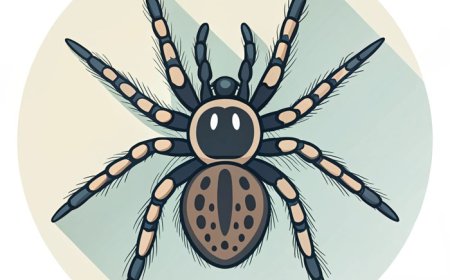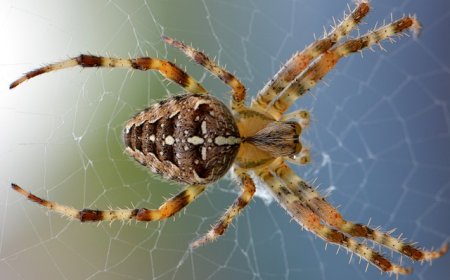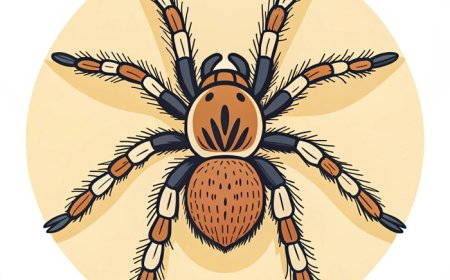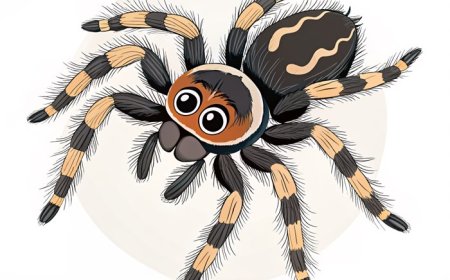Orb-Weaver Spider: Master Builders of the Web World
Discover the colorful and clever orb-weaver spider. Learn how it spins giant webs, catches prey, and lives peacefully in gardens, forests, and fields.
🕷️ Introduction
The orb-weaver spider is one of the most common and recognizable spiders in the world. It gets its name from the giant, wheel-shaped webs it builds—called orbs—which sparkle in the sunlight and catch insects mid-flight. These spiders are often found in gardens, meadows, forests, and even near homes. With their bright colors and large, visible webs, orb-weavers are easy to spot, especially in the late summer and early fall.
Despite their size and appearance, orb-weaver spiders are completely harmless to humans. In fact, they are among the most peaceful and beneficial spiders you can encounter. They play a key role in natural pest control, catching flies, beetles, mosquitoes, and moths in their intricate webs.
🧬 What Does an Orb-Weaver Spider Look Like?
Orb-weavers come in many sizes and colors, depending on the species, but most have a large, rounded abdomen, eight long legs, and patterns or markings that help them blend into flowers, leaves, or tree bark. Some are dull brown, while others are bright orange, yellow, or green, and a few even have spiny or jagged-looking bodies.
Most orb-weavers are between 1 and 3 centimeters long, though females are usually much larger than males. Their long, spindly legs are covered with fine hairs that help them sense vibrations on their web. Though they may look frightening up close, they are slow-moving and shy, and they rarely leave their web unless disturbed.
🕸️ The Art of Web-Building
One of the most amazing things about orb-weaver spiders is their ability to build perfectly round webs, which can measure up to 2 feet across. These webs are designed to catch flying insects, and the spider rebuilds or repairs them every day—often right before nightfall.
Web-building is a careful and complex process. First, the spider produces non-sticky silk to make the frame and support lines. Then it adds spiral-shaped sticky silk that traps prey. The center of the web is called the hub, and that’s where the spider usually waits or rests nearby with a signal thread connected to the center, so it can feel when something gets caught.
Orb-weavers are patient hunters. They don’t chase their prey. Instead, they rely on their web to do the work, using vibrations to detect when an insect has flown into the trap.
🍽️ What Do Orb-Weaver Spiders Eat?
Orb-weavers feed mostly on flying insects such as flies, moths, beetles, mosquitoes, and other small bugs. When something gets caught in the web, the spider rushes out to bite and paralyze it with venom, then wraps it in silk for later. Some orb-weavers eat their prey immediately, while others save it for a nighttime snack.
In the morning, it’s common for the spider to eat its entire web, recycling the silk proteins to use again when building a fresh one that night.
🌍 Where Do They Live?
Orb-weaver spiders are found all over the world, with hundreds of species living on every continent except Antarctica. They prefer areas with lots of open space for their webs, such as gardens, meadows, forest clearings, and near porches or fences.
They are most active in late summer and early fall, especially in the early morning and evening when dew collects on their webs, making them easy to see. Many people notice orb-weavers around their homes during this time of year, when they help reduce flying insect populations.
🐣 Life Cycle
Orb-weaver spiders begin life as tiny spiderlings, hatching from eggs laid in a silky egg sac. A single sac can contain hundreds of eggs, and the mother often hides it in a protected place like under leaves or inside bark. After hatching, the spiderlings may balloon away on threads of silk to find a new place to live.
Most orb-weaver species live for about one year, though some may survive through a second season. Females usually die shortly after laying eggs, but the next generation continues the cycle.
🌟 Fun Facts About Orb-Weaver Spiders
Orb-weaver webs can have over 30 meters (100 feet) of silk in total!
Some orb-weavers spin decorations in their webs called stabilimenta, which may help attract prey or confuse predators.
The golden orb-weaver produces golden-colored silk that shines in the sunlight.
Orb-weavers help control mosquito and pest populations in gardens.
These spiders rarely bite, and their venom is not harmful to humans.
👧 Kid-Friendly Summary
Orb-weaver spiders are peaceful web-spinning spiders that help catch flying bugs like mosquitoes and flies. They build beautiful round webs and often live in gardens or forests. They don’t hurt people and are important for keeping nature in balance.
📚 Vocabulary Words
Orb – A circle or round shape, like the spider’s web
Spinneret – The part of a spider that produces silk
Stabilimentum – A zig-zag pattern of silk in some webs
Venom – A poison used by animals to catch or defend against prey
Ballooning – A way young spiders travel using silk in the wind
Signal Thread – A special line of silk the spider uses to detect movement in its web
Web Hub – The center of the spider’s web
Arachnid – A class of invertebrates that includes spiders, scorpions, and ticks
❓ Interactive Quiz (8 Questions)
1. What shape is an orb-weaver spider’s web?
A. Triangle
B. Square
C. Circle
D. Spiral
2. Where do orb-weavers usually live?
A. In oceans
B. In gardens and forests
C. In caves only
D. Underground
3. What do orb-weaver spiders eat?
A. Plants
B. Berries
C. Insects
D. Fish
4. What is the web's center called?
A. Ring
B. Spinneret
C. Nest
D. Hub
5. How do orb-weavers catch food?
A. They run after it
B. They use a sticky web
C. They dig holes
D. They fly
6. What happens to the web in the morning?
A. The spider burns it
B. The spider eats it
C. The spider gives it away
D. It disappears on its own
7. Are orb-weaver spiders dangerous to humans?
A. Yes, they are deadly
B. No, they are harmless
C. Only the males are dangerous
D. Only at night
8. What is ballooning?
A. A spider party
B. A way to float through the air using silk
C. When spiders dance
D. A trick to scare birds





















































